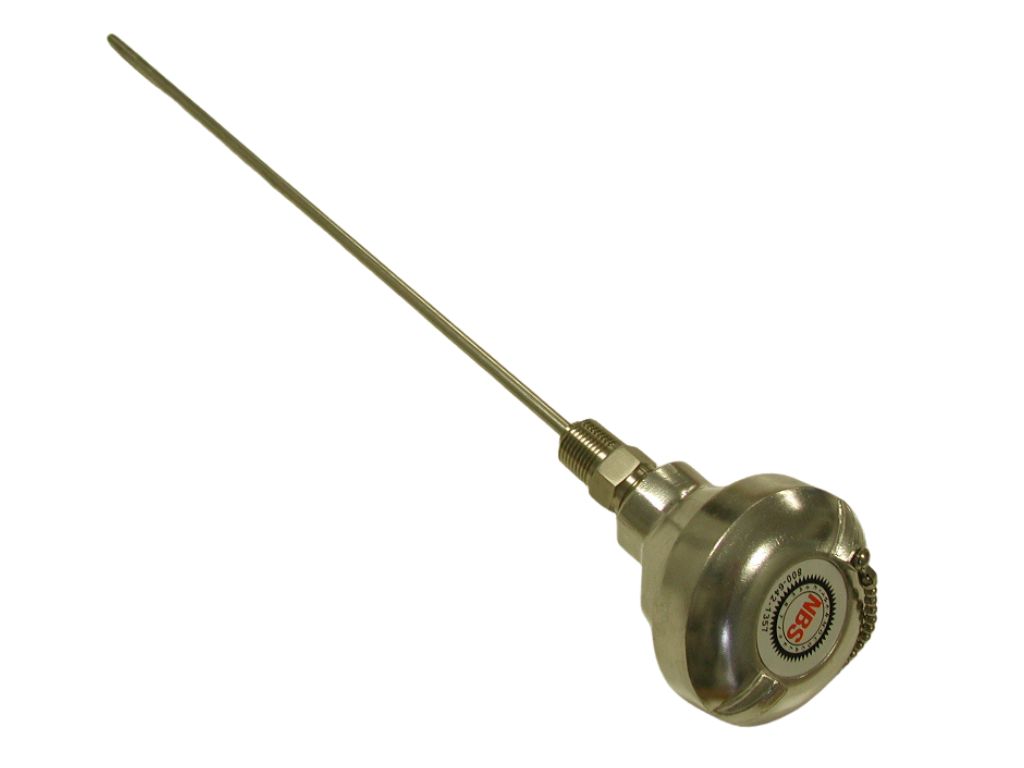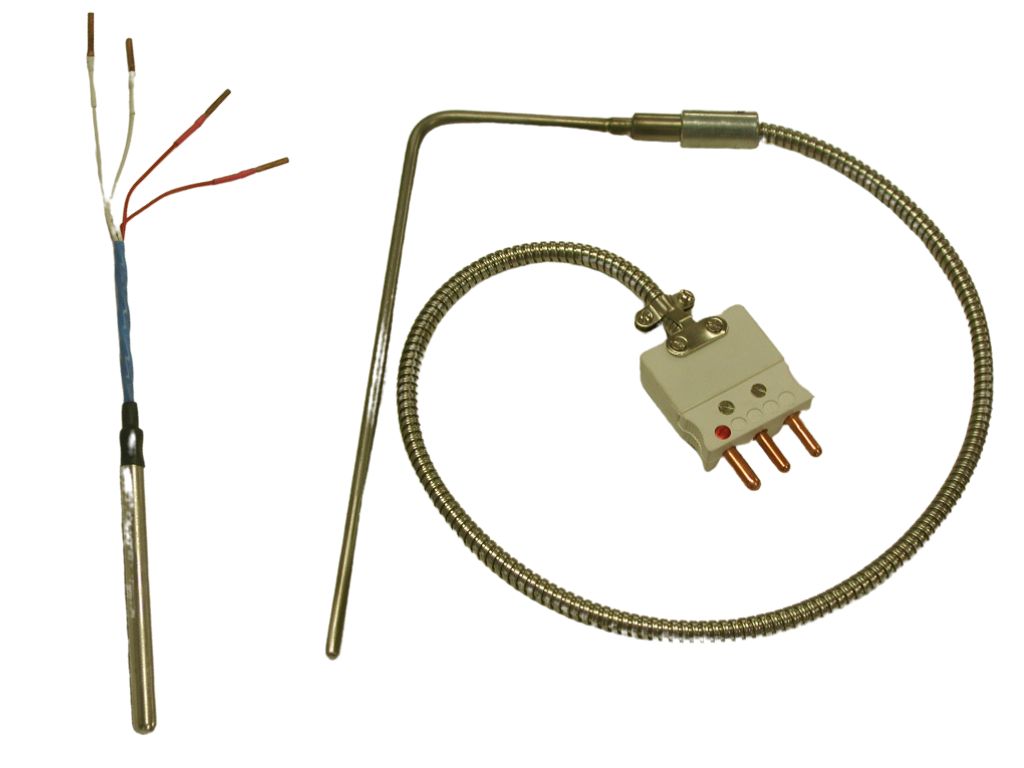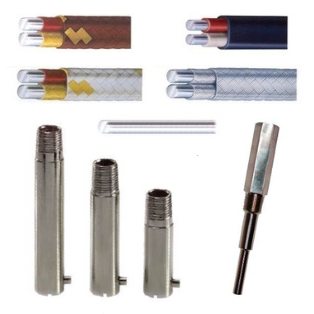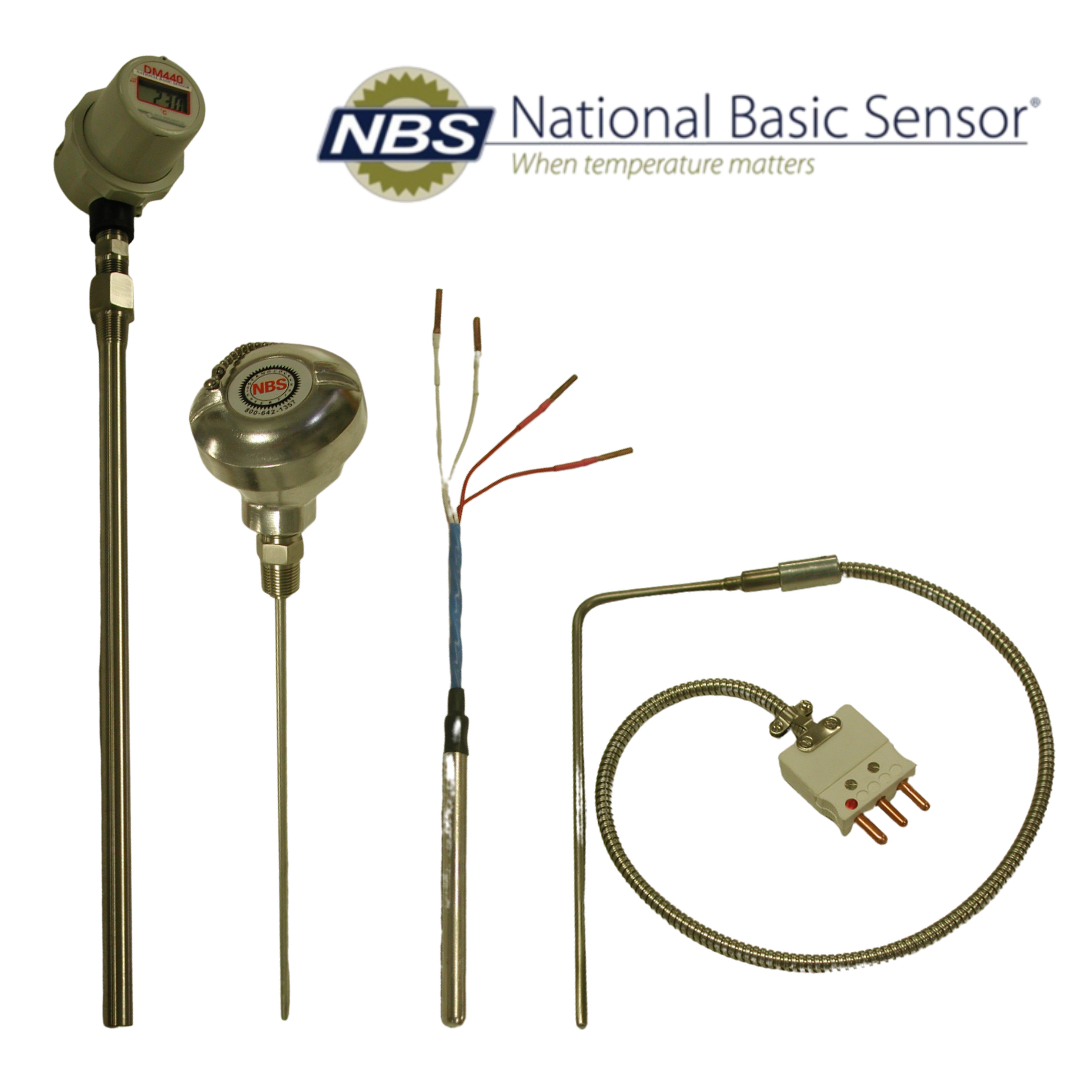National Basic Sensor Thermocouples and RTDs
A thermocouple is composed of two dissimilar metals, usually in wire form, joined together at one end to form the measuring or “hot” junction, while the other end is known as the reference or “cold” junction. When there is a temperature difference between these two junctions, a small electromotive force (emf) is developed. An emf will originate not only at the hot junction but there is also the potential of the same wherever there is a temperature gradient between parts of the same wire.
An RTD’s basis of operation lies in a common property of any metal, the relationship between its temperature and the resistance to the flow of electrical currents through it. Once the characteristics of this relationship were established, a few metals found their way into common use in RTD’s. These are mainly, platinum, nickel and copper. Platinum’s resistance changes relative to temperature, reflected in an RTD’s TCR (temperature coefficient of resistance), is about 0.0039Ω/Ω/°C sufficient for high sensitivity to temperature at the usual 100Ω nominal resistance. Linearity of the resistance/ temperature relationship is also quite good and well defined. And finally, accuracy is excellent due to platinum’s stability and resistance to contamination, which also results in a wide recommended operating temperature range of -200 to 550°C. The most common RTD, a platinum RTD as described above but modified for industrial applications, has a platinum alloy element (usually platinum – 5% rhodium) with a TCR of 0.00385Ω/Ω/°C and shares most of the characteristics of the platinum RTD with added durability and a recommended temperature range extended to 650°C. Nickel and copper are also occasionally used as resistive elements in RTD applications. Nickel has the largest TCR at 0.00672Ω/Ω/°C for very high sensitivity but its linearity is very poor. Copper is the most linear, but has a limited temperature range.
Differences between Thermocouples and RTDs

Thermocouples
- 0.1 – 10s Response Time
- -200 to 2000°C
- Usually more cost-effective than RTD
- Usually smaller than RTD
- Higher Sensitivity
- Not as accurate as an RTD
- Non-Linear output
- Lower stability compared to RTD
- Thermoelectric sensor that measures the change in the temperature using the change in voltage / emf

RTDs
- 1 – 50s Response Time
- -200 to 600°C
- Not as cost-effective
- Larger than T/C
- Low Sensitivity
- More Accurate than T/C
- Linear Output
- Higher Stability compared to T/C
- Self-Heating
- Measures resistance of electrical wires to determine temperature changes

Beyond the T/C and RTDs
To go along with the Thermocouples and RTDs, we also provide:
- Thermowells (Threaded, Flanged, VanStone, Socketwelded, Weld-in, Sanitary)
- Wire (Bare, High Temperature, Ceramic Insulated, PVC Extension, Fiberglass Insulated, Refrasil Insulated)
- Bayonet Adaptors (available in multiple sizes and materials)
- Tubing, Connectors, Connection Heads, and More!

